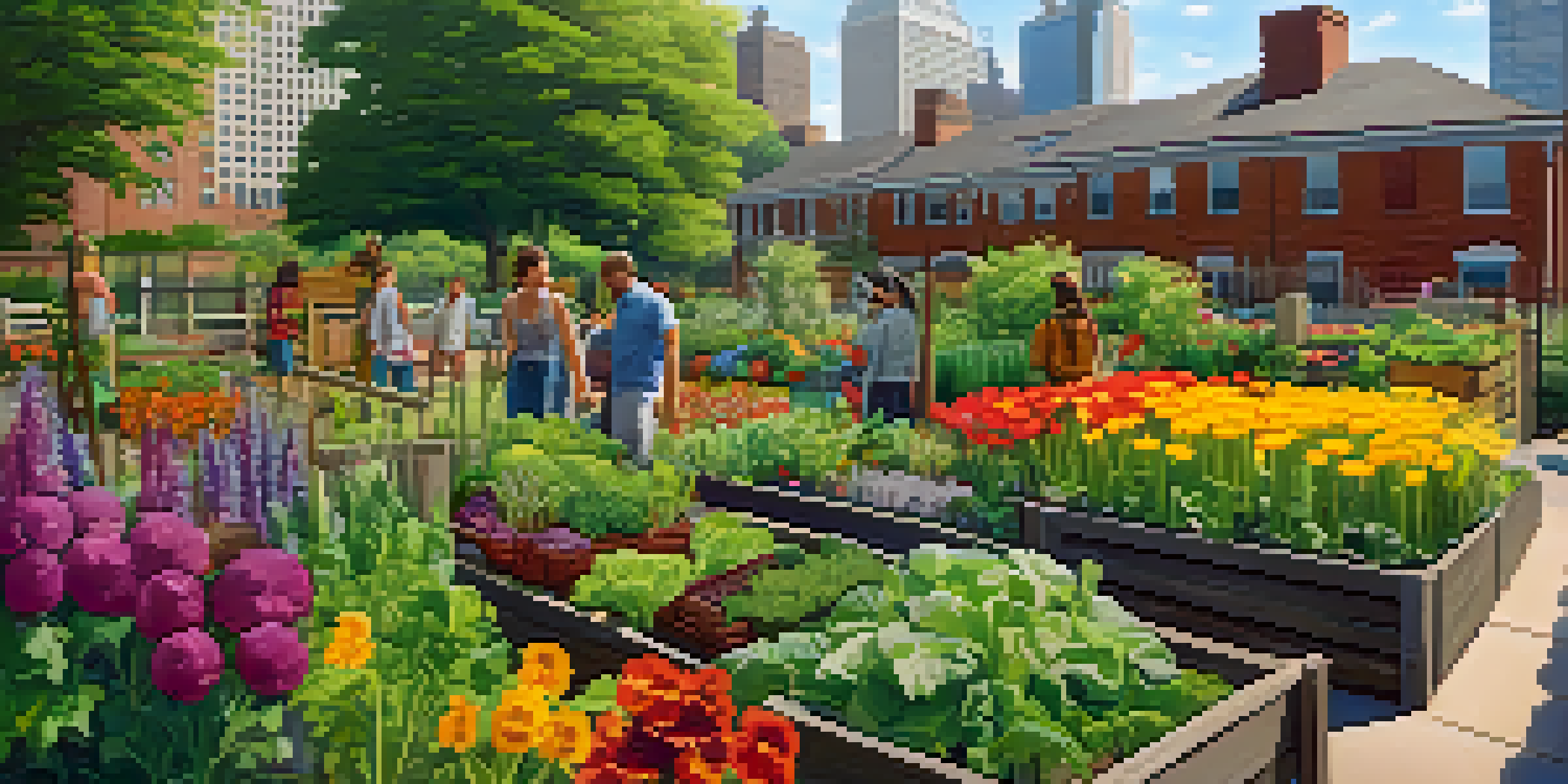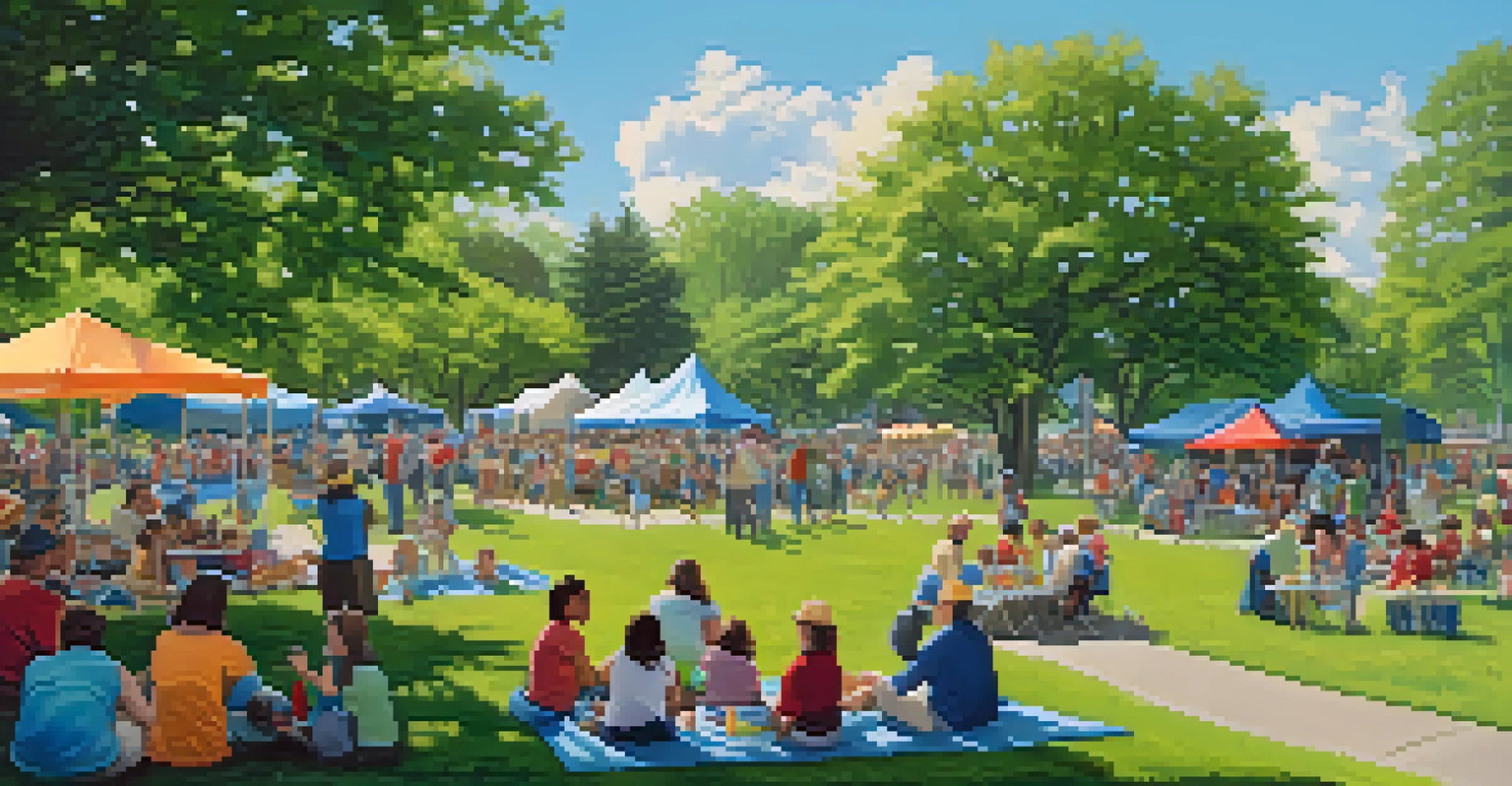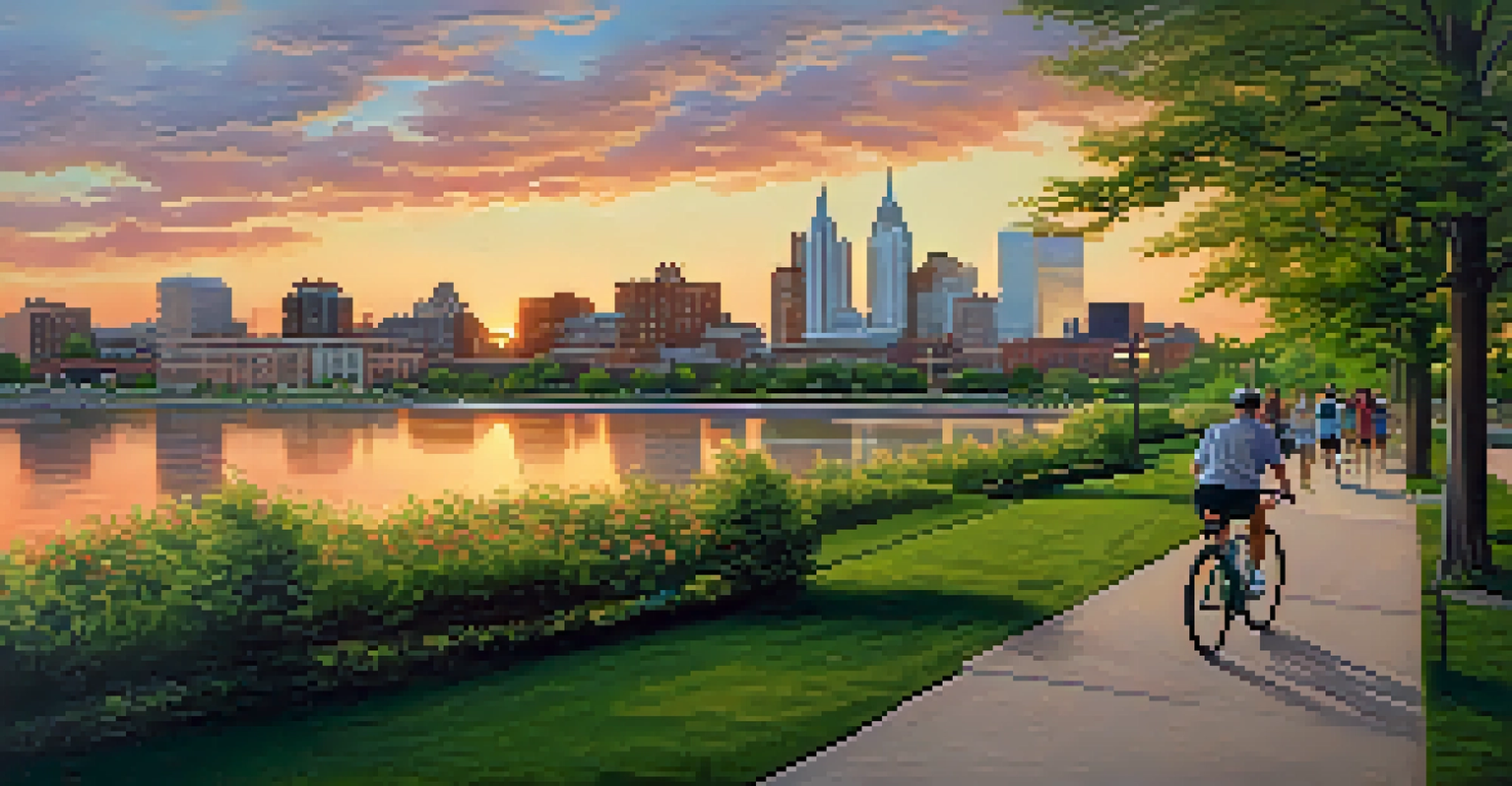Future of Newark: Sustainable Development and Gentrification

Understanding Sustainable Development in Newark
Sustainable development refers to meeting present needs without compromising future generations' ability to meet theirs. In Newark, this concept is gaining traction as the city looks to revitalize its neighborhoods while promoting environmental stewardship. It’s about creating spaces that are not just livable today but also resilient for the future.
Sustainable development is about the future we want for our children and their children.
One key aspect of sustainable development in Newark is the focus on green infrastructure. This includes initiatives like urban gardens, green roofs, and improved public transportation. These efforts not only enhance the city's aesthetic appeal but also contribute to a healthier environment, reducing pollution and improving air quality.
Moreover, community involvement is crucial in this developmental journey. Residents are increasingly being consulted in decision-making processes, ensuring that their voices are heard. This collaborative approach fosters a sense of ownership and pride among Newark's citizens, making sustainability a shared goal rather than just a top-down mandate.
The Impact of Gentrification on Newark's Communities
Gentrification often walks a fine line between revitalization and displacement, and Newark is no exception. While the influx of new businesses and residents can bring much-needed investment, it can also lead to rising rents and the erosion of long-standing communities. As neighborhoods change, many long-time residents may find themselves priced out of their homes.

The cultural fabric of Newark is rich, with a diverse history that contributes to its unique identity. Gentrification risks diluting this heritage, as new developments may cater to incoming populations rather than existing residents. This shift can create a disconnect, where long-time Newarkers feel alienated in their own neighborhoods.
Balancing Development and Community
Newark aims to find harmony between urban development and the needs of its existing residents to foster inclusivity and cultural preservation.
Addressing gentrification requires a thoughtful approach that balances development with community preservation. Policies that support affordable housing and protect existing residents are essential. By prioritizing inclusivity, Newark can create a future where all residents feel valued and secure.
Green Initiatives Driving Newark's Development
Newark is embracing green initiatives as a core part of its development strategy. Projects such as the Newark Riverfront Park not only enhance public spaces but also promote biodiversity and environmental awareness. These initiatives showcase the city's commitment to sustainability and improving residents' quality of life.
The greatest challenge of the day is how to bring about a revolution of the heart.
Another significant effort is the push for renewable energy sources. By investing in solar power and energy-efficient buildings, Newark aims to reduce its carbon footprint and lower energy costs for residents. This shift not only supports environmental goals but also fosters economic growth through job creation in green industries.
Community engagement in these green initiatives is vital. Residents are encouraged to participate in local environmental programs, such as tree planting and recycling initiatives. This active involvement strengthens community ties and empowers residents to take an active role in shaping their environment.
Balancing Development and Community Needs
Finding a balance between development and the needs of the community is a challenging yet essential task for Newark. As new projects arise, it's crucial to ensure they serve the interests of existing residents. Listening to community feedback can guide decisions that reflect the desires and concerns of those who call Newark home.
Inclusive development involves creating spaces that cater to diverse demographics, such as affordable housing and community centers. These facilities can provide vital resources and foster a sense of belonging among residents. By prioritizing mixed-use developments, Newark can create neighborhoods where people live, work, and play together.
Community Engagement is Key
Active participation from Newark residents in decision-making processes ensures that development reflects their needs and aspirations.
Ultimately, the goal is to create a city that thrives economically while preserving its cultural identity. Striking this balance requires ongoing dialogue and collaboration between city officials, developers, and the community. A united approach can lead to development that benefits all Newarkers and promotes long-term sustainability.
The Role of Local Government in Sustainable Growth
Local government plays a pivotal role in steering Newark toward sustainable growth. Through policies and regulations, officials can ensure that development projects align with the principles of sustainability and community welfare. By prioritizing green initiatives and affordable housing, they can set a framework for responsible growth.
Moreover, local government can facilitate partnerships between public and private sectors to fund sustainable projects. Collaborative efforts can lead to innovative solutions that address both environmental and social challenges. These partnerships can help leverage resources, expertise, and community insights to create impactful projects.
Transparency and accountability are also essential in building trust between the government and residents. Engaging the community in decision-making processes fosters a sense of ownership and encourages civic participation. When residents feel their voices matter, they are more likely to support initiatives that promote sustainable development.
Community Voices: The Heart of Newark's Future
Community input is crucial in shaping Newark's future amidst its development challenges. Local organizations and advocacy groups provide platforms for residents to voice their concerns and ideas. By actively participating in discussions about gentrification and sustainability, Newarkers can influence decisions that directly affect their lives.
Storytelling is a powerful tool in this dialogue. Sharing personal experiences can highlight the impact of development on people's lives, fostering empathy and understanding among stakeholders. These narratives can serve as a reminder of the importance of community heritage and the need to preserve it amidst change.
Sustainable Initiatives Drive Growth
Newark is prioritizing green infrastructure and renewable energy projects to promote environmental sustainability and improve residents' quality of life.
Ultimately, empowering residents to take part in the planning process can lead to more equitable outcomes. When community voices are prioritized, solutions are more likely to reflect the needs and desires of those most impacted by development. This inclusive approach can help Newark navigate its future with a sense of unity and purpose.
Looking Ahead: A Collaborative Vision for Newark
As Newark moves forward, a collaborative vision is essential for its growth and sustainability. This vision should encompass the goals of economic development, environmental stewardship, and social equity. By aligning these priorities, the city can create a future that benefits all its residents.
Collaboration between different stakeholders—government, businesses, and community members—can lead to innovative solutions. Workshops, forums, and community events provide opportunities for dialogue and brainstorming. When diverse perspectives come together, they can spark creative ideas that address the city's challenges.

In conclusion, Newark stands at a crossroads where it can choose to embrace a future defined by sustainability and inclusivity. By prioritizing community engagement and responsible development, Newark can create a model for other cities facing similar challenges. The future is bright for Newark if it continues to nurture collaboration and the voices of its residents.